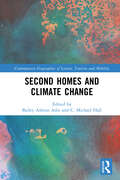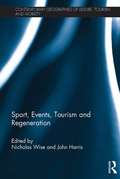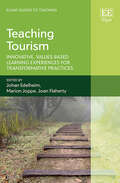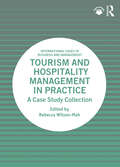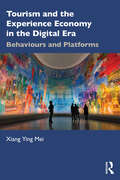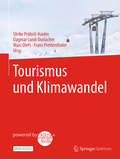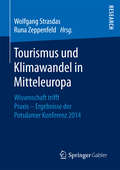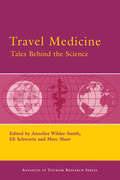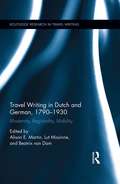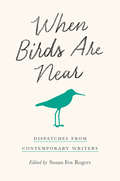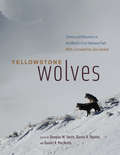- Table View
- List View
Saturn V Rocket (UEB Contracted)
This is an image of the Saturn V rocket: the type that carried American astronauts on the various Apollo missions to the moon in the 1960s and '70s. There is a locator dot shown, which will be at the top left of the page when the image is the right way up. The rocket is seen from the side moving diagonally from the bottom left of the page to the top right. It was 354 feet (108 metres) high and consisted of four stages, the last of which landed on the moon. At the bottom left of the page are the first stage rocket engine's exhaust gases pushing the vehicle through the atmosphere. Up and right from this are three of the five first stage engine outlets. Moving up and to the right are the rest of the rocket stages; they are marked by lines across the width of the launch vehicle. The fine textured section at the top right of the page is the spacecraft. This carried the astronauts and the lunar module, which travelled to and landed on the moon. The pointed section at the very top was the LES (launch escape system)
Saturn V Rocket (UEB Uncontracted)
This is an image of the Saturn V rocket: the type that carried American astronauts on the various Apollo missions to the moon in the 1960s and '70s. There is a locator dot shown, which will be at the top left of the page when the image is the right way up. The rocket is seen from the side moving diagonally from the bottom left of the page to the top right. It was 354 feet (108 metres) high and consisted of four stages, the last of which landed on the moon. At the bottom left of the page are the first stage rocket engine's exhaust gases pushing the vehicle through the atmosphere. Up and right from this are three of the five first stage engine outlets. Moving up and to the right are the rest of the rocket stages; they are marked by lines across the width of the launch vehicle. The fine textured section at the top right of the page is the spacecraft. This carried the astronauts and the lunar module, which travelled to and landed on the moon. The pointed section at the very top was the LES (launch escape system)
Second Homes and Climate Change (Contemporary Geographies of Leisure, Tourism and Mobility)
This book is the first to address the important interrelationship between second homes and climate change, which has become an increasingly relevant issue for many regions around the world. Second homes are often a key source of tourist visitation as well as economic benefit for their host communities. The chapters provide an array of international case studies and climate change impacts, including the changing biocultural landscapes in Italy, hazard risks in the mountains of Poland, and the shifting media discussion on second homes and climate change in Finland. Topics covered focus on issues around planning and governance in second home locations, adaptation and mitigation measures implemented by second home owners, and the influence of second home owners’ place attachment in relation to second home impacts. It introduces the overall topic of second homes and climate change while also laying the groundwork for future work in this burgeoning area of research. This book will be of significant interest to upper-level undergraduates, graduate students, and academics in the fields of geography, tourism, planning, housing studies, regional development, environmental management, and disaster management. It would also be of use for professionals who engage with second home communities, particularly planners, government officials, and environmental officers.
Space Shuttle (Large Print)
This is a diagram of an American space shuttle, designed to carry large loads in an orbital path around the circumference of the Earth. There is a locator dot shown, which will be at the top left of the page when the image is the right way up. The shuttle is shown in two views: a plan view (seen from above) and a side view. The shuttle is carried into the upper atmosphere of the earth by SRBs (solid rocket boosters) and then continues under the power of its own engines. The plan view is in the top left part of the page. The nose cone of the shuttle is at the far left. Directly right of this is the cockpit window, the main body of the craft with the payload doors, the engine covers, the rudder, and the engines. The swept-back wings of the shuttle extend up and down the page from the main body. To the far right of the plan view the expelled gasses that push the craft through space can be found. The side view of the shuttle is in the bottom right of the page. At the left of the image is the nose cone with a landing wheel just down the page. Moving right is the main body of the craft with the payload doors at the top and the wings and rear landing wheel down the page. Further to the right two of the four engines are visible with expelled gasses at the far right. Slightly up the page is the rudder.
Space Shuttle (UEB Contracted)
This is a diagram of an American space shuttle, designed to carry large loads in an orbital path around the circumference of the Earth. There is a locator dot shown, which will be at the top left of the page when the image is the right way up. The shuttle is shown in two views: a plan view (seen from above) and a side view. The shuttle is carried into the upper atmosphere of the earth by SRBs (solid rocket boosters) and then continues under the power of its own engines. The plan view is in the top left part of the page. The nose cone of the shuttle is at the far left. Directly right of this is the cockpit window, the main body of the craft with the payload doors, the engine covers, the rudder, and the engines. The swept-back wings of the shuttle extend up and down the page from the main body. To the far right of the plan view the expelled gasses that push the craft through space can be found. The side view of the shuttle is in the bottom right of the page. At the left of the image is the nose cone with a landing wheel just down the page. Moving right is the main body of the craft with the payload doors at the top and the wings and rear landing wheel down the page. Further to the right two of the four engines are visible with expelled gasses at the far right. Slightly up the page is the rudder.
Space Shuttle (UEB Uncontracted)
This is a diagram of an American space shuttle, designed to carry large loads in an orbital path around the circumference of the Earth. There is a locator dot shown, which will be at the top left of the page when the image is the right way up. The shuttle is shown in two views: a plan view (seen from above) and a side view. The shuttle is carried into the upper atmosphere of the earth by SRBs (solid rocket boosters) and then continues under the power of its own engines. The plan view is in the top left part of the page. The nose cone of the shuttle is at the far left. Directly right of this is the cockpit window, the main body of the craft with the payload doors, the engine covers, the rudder, and the engines. The swept-back wings of the shuttle extend up and down the page from the main body. To the far right of the plan view the expelled gasses that push the craft through space can be found. The side view of the shuttle is in the bottom right of the page. At the left of the image is the nose cone with a landing wheel just down the page. Moving right is the main body of the craft with the payload doors at the top and the wings and rear landing wheel down the page. Further to the right two of the four engines are visible with expelled gasses at the far right. Slightly up the page is the rudder.
SpaceShipOne (Large Print)
This page shows an image of SpaceShipOne, designed to be the first non-government funded craft to reach the edge of space at just over one hundred kilometres. It was launched from a purpose-built aircraft, White Knight. There is a locator dot shown, which will be at the top left of the page when the image is the right way up. At the top centre of the page is the nose cone of the craft with many small round windows shown in a heavy texture. Down the page is the body of the plane and down again is the nozzle of the engine and the hot gases being expelled towards the bottom of the page. To the left and right of the body are the two wings. They are hinged so that their configuration can be changed for the climbing, gliding, and re-entry stages of flight.
SpaceShipOne (UEB Contracted)
This page shows an image of SpaceShipOne, designed to be the first non-government funded craft to reach the edge of space at just over one hundred kilometres. It was launched from a purpose-built aircraft, White Knight. There is a locator dot shown, which will be at the top left of the page when the image is the right way up. At the top centre of the page is the nose cone of the craft with many small round windows shown in a heavy texture. Down the page is the body of the plane and down again is the nozzle of the engine and the hot gases being expelled towards the bottom of the page. To the left and right of the body are the two wings. They are hinged so that their configuration can be changed for the climbing, gliding, and re-entry stages of flight.
SpaceShipOne (UEB Uncontracted)
This page shows an image of SpaceShipOne, designed to be the first non-government funded craft to reach the edge of space at just over one hundred kilometres. It was launched from a purpose-built aircraft, White Knight. There is a locator dot shown, which will be at the top left of the page when the image is the right way up. At the top centre of the page is the nose cone of the craft with many small round windows shown in a heavy texture. Down the page is the body of the plane and down again is the nozzle of the engine and the hot gases being expelled towards the bottom of the page. To the left and right of the body are the two wings. They are hinged so that their configuration can be changed for the climbing, gliding, and re-entry stages of flight.
Sport, Events, Tourism and Regeneration (Contemporary Geographies of Leisure, Tourism and Mobility)
Investments in sport, events and tourism in cities and wider regions are part of nascent regeneration strategies linked to transitioning economic bases and place images. While it is important to consider physical regeneration, there is a range of subsequent benefits and opportunities brought about through regeneration that considers social impacts, communities and how investments and developments influence how people interact in transformed spaces. This book brings together a collection focusing on the diverse range of approaches and perspectives of regeneration. Twelve chapters outline and bring together critical perspectives of regeneration from scholars in different parts of the world. This collection critically assesses some of the key factors impacting upon regeneration initiatives in relation to sport, events and tourism. By doing so, this book assesses if new opportunities have arisen from developments, increasing the demands and needs of locals and tourists, or if transformations result in exclusion - thus challenging who regeneration is for. This book will be valuable reading for students and academics interested in tourism studies, events planning, sport and leisure studies or development studies, as well as the wider social sciences.
Teaching Tourism: Innovative, Values-based Learning Experiences for Transformative Practices (Elgar Guides to Teaching)
Tourism as an activity is increasingly being criticised for its exploitative and extractive industrial approaches to business. Yet, it has the power to transform and to regenerate societies, cultures and the environment. The desire to explore the world around us is deeply embedded in many people’s psyche, but it comes at a cost to the environment and often to the residents of the visited communities. Much of tourism education has been closely linked to preparing students for future professional practice, but the challenges and opportunities linked to its consumption require that its future leaders must exhibit very different values and understandings to tackle ever more complex and wicked problems from which tourism cannot dissociate itself.This teaching guide brings together a compilation of values-based learning experiences that can be adapted to suit the needs and disposition of individual instructors. It aims not only to engage students in the subject matter but also deepen their understanding of its complexity and interconnectivity and help them become global citizens that lead lives of consequence.Academics and practitioners in higher education institutions around the world in many different disciplines will find the thought-provoking conversation starters and activities of help in encouraging students to take a multi- or post-disciplinary approach to explore tourism from a values perspective. Consultants and academics engaging community stakeholders in capacity building will value its practical, accessible information.
Tourism and Hospitality Management in Practice: A Case Study Collection (International Cases in Business and Management)
Tourism and Hospitality Management in Practice: A Case Study Collection is a collection of real-world business cases with a particular focus on small- and medium-sized enterprises (SMEs) in different countries from around the world. Fifteen compact cases capture a variety of business situations that present decisions, opportunities, or challenges. Organized into four parts, the cases reflect the various impacts of changing external conditions and internal factors in tourism and hospitality SMEs. Each case tells the story of a particular business situation and context, and the student takes on the role of the decision maker. All cases include a synopsis, discussion questions, a learning activity, references, and further reading. An introductory chapter written specifically for students offers advice on what to expect from learning with a case, as well as hints on how to approach a case analysis. The cases offer multiple opportunities to connect tourism and hospitality knowledge and theory to practice, with a particular emphasis on analytical skill development, problem-solving, and alternative generation. This case collection is suitable for undergraduate and graduate courses in tourism, hospitality management, and business, as well as for professional development programs. For instructors who teach with the cases, there are teaching notes, comprising comprehensive teaching plans and resources, learning activities, reflective questions, additional readings, and external resources, all available online.
Tourism and the Experience Economy in the Digital Era: Behaviours and Platforms
This book brings together diverse theoretical perspectives and practical examples of the experience economy in developing and developed economies in tourism-related industries. It provides insights on ‘new’ experience development attributed to new technology and changes in consumer behaviour. It explores how digitalisation and new digital tools, smart solutions, smart applications, and social media platforms to frame and create unique and memorable experiences. It also focuses on the role of technology in changing consumer behaviour and motivations. Chapters are contributed by global academicians and industry practitioners with the goal to link theories to practical case studies and thought points throughout the chapters to trigger curiosity and critical thinking. This book provides insights on the development and trends in the tourism industry in the ‘new’ technology-driven experience economy. It will appeal to students, researchers and practitioners in the fields of tourism, the creative industries, business studies, cultural studies and leisure studies.
Tourismus und Klimawandel
Diese Open-Access-Publikation beleuchtet die komplexen Beziehungen zwischen Tourismus und Klimawandel für die Tourismusdestination Österreich und basiert auf einer umfassenden Erhebung, Zusammenfassung und Bewertung des aktuellen Standes der Forschung zu diesem Thema. Für diesen Bericht haben 40 Wissenschaftler*innen führender Forschungseinrichtungen, unterstützt durch ein internationales Team an Begutachter*innen, mehr als zwei Jahre intensiv zusammengearbeitet.Die dargestellten Forschungsarbeiten zum Einfluss des Klimawandels auf den Tourismus gehen davon aus, dass sich die in den nächsten Jahrzehnten zu erwartenden Veränderungen des Klimas sehr stark auf die österreichische Tourismusbranche auswirken werden. Allerdings fällt dem Sektor auch eine nicht unerhebliche Rolle als Mitverursacher des Klimawandels zu. Aktuellen Untersuchungen zufolge verursacht der Tourismus rund 8% aller globalen CO2-Emissionen. Vor diesem Hintergrund werden für die verschiedenen Teilaspekte des touristischen Angebots geeignete Minderungs- und Anpassungsmaßnahmen vorgestellt und diskutiert.Der Bericht verdeutlicht insbesondere die spezifische Betroffenheit der touristischen Outdoor-Aktivitäten vom Wintersport bis zum Golftourismus, beschreibt die neuen Herausforderungen für den Städtetourismus und die Organisation von Events und beleuchtet ausführlich, wie Anpassungsmöglichkeiten, insbesondere im Bereich der Mobilität, der Beherbergung, touristischer Indoor-Angebote, sowie der Gastronomie und Kulinarik, ausgestaltet und umgesetzt werden können. Dabei werden die Verantwortung und die Möglichkeiten des Reisenden ebenso dargestellt, wie die Handlungsoptionen von Betrieben, Destinationen und der rahmensetzenden nationalen Politik. Das Buch macht deutlich, dass, um die Pariser Klimaziele erreichen zu können, ein veränderter Lebensstil und rasche Umsetzungsschritte notwendig sind. Wie dieser „Paris-Lifestyle“ erreicht werden könnte und welche Herausforderungen auf diesem Weg bewältigt werden müssen, verdeutlichen die zusammenfassenden Schlusskapitel.Die vorliegende differenzierte Aufbereitung des Themas für alle Reisenden, die Tourismusbranche und die Politik war nur durch eine gezielte Förderung aus Mitteln des Klima- und Energiefonds im Rahmen des Programms „Austrian Climate Research Programme – ACRP“ möglich.
Tourismus und Klimawandel in Mitteleuropa: Wissenschaft trifft Praxis - Ergebnisse der Potsdamer Konferenz 2014
Der Konferenzband stellt den aktuellen Stand des Wissens und praktische Erfahrungen von Unternehmen und Regionen im Spannungsfeld zwischen Tourismus und Klimawandel in Mitteleuropa dar. Die Autoren diskutieren die daraus resultierenden Implikationen und Handlungserfordernisse für Klimaanpassung und Klimaschutz im Tourismus. Die Erderwärmung stellt die Branche in den kommenden Jahrzehnten vor neue Herausforderungen. Kaum ein anderer Wirtschaftszweig ist so von klimatischen Gegebenheiten abhängig wie der Tourismus. Daraus können sich neben Risiken auch Chancen ergeben.
Transnational East Asian Studies (Transnational Modern Languages #8)
Transnational East Asian Studies demonstrates how transnationalism as a mode of intellectual enquiry has wide-ranging interdisciplinary potential and has immense value when examining the past, just as much as much as when examining the present. Artificially erected borders, which appear on maps and globes, fail to consider the ways people in diverse regions live and practice their everyday lives, existing beyond boundaries. The people of East Asia have always been on the move, they have never been homogeneous, and have evolved together, not apart. In this sense, people around the globe and also in East Asia have always been involved in a process of change and transformation. Hence, transnationalism is a way to overcome methodological nationalism, not only as a concept of identity and spatiality, but also as a concept temporally situated in the modern, because as a methodology, transnationalism does not take the national as a precondition. It allows us to move beyond and across borders, and to examine how ideas have been used and transformed in different contexts. This book thus underscores the complex interactions in the context of East Asia, past and present, while shaping the future of this complicated region.
Transnational French Studies (Transnational Modern Languages #6)
The contributors to Transnational French Studies situate this disciplinary subfield of Modern Languages in actively transnational frameworks. The key objective of the volume is to define the core set of skills and methodologies that constitute the study of French culture as a transnational, transcultural and translingual phenomenon. Written by leading scholars within the field, chapters demonstrate the type of inquiry that can be pursued into the transnational realities – both material and non-material – that are integral to what is referred to as French culture. The book considers the transnational dimensions of being human in the world by focussing on four key practices which constitute the object of study for students of French: language and multilingualism; the construction of transcultural places and the corresponding sense of space; the experience of time; and transnational subjectivities. The underlying premise of the volume is that the transnational is present (and has long been present) throughout what we define as French history and culture. Chapters address instances and phenomena associated with the transnational, from prehistory to the present, opening up the geopolitical map of French studies beyond France and including sites where communities identified as French have formed.
Transnational German Studies (Transnational Modern Languages #5)
This volume consists of a series of essays, written by leading scholars within the field, demonstrating the types of inquiry that can be pursued into the transnational realities underpinning German-language culture and history as these travel right around the globe. Contributions discuss the inherent cross-pollination of different languages, times, places and notions of identity within German-language cultures and the ways in which their construction and circulation cannot be contained by national or linguistic borders. In doing so, it is not the aim of the volume to provide a compendium of existing transnational approaches to German Studies or to offer its readers a series of survey chapters on different fields of study to date. Instead, it offers novel research-led chapters that pose a question, a problem or an issue through which contemporary and historical transcultural and transnational processes can be seen at work. Accordingly, each essay isolates a specific area of study and opens it up for exploration, providing readers, especially student readers, not just with examples of transnational phenomena in German language cultures but also with models of how research in these areas can be configured and pursued. Contributors: Angus Nicholls, Anne Fuchs, Benedict Schofield, Birgit Lang, Charlotte Ryland, Claire Baldwin, Dirk Weissmann, Elizabeth Anderson, James Hodkinson, Nicholas Baer, Paulo Soethe, Rebecca Braun, Sara Jones, Sebastian Heiduschke, Stuart Taberner and Ulrike Draesner.
Transnational Italian Studies (Transnational Modern Languages #4)
Transnational Italian Studies is specifically targeted at a student audience and is designed to be used as a key text when approaching the disciplinary field of Italian studies. It allows the study of Italian culture to be construed and practised not simply as the inquiry into a national tradition but as the study of the interaction of cultural practices both within Italy itself and in those parts of the world that have witnessed the extent of Italian mobility. The text argues that Italian culture needs to be considered in a transnational/transcultural perspective and that an understanding of linguistic and cultural translation underlies all approaches to the study of Italian culture in a global context. Contributions deploy a range of methodological approaches to understand and illustrate how language operates, how culture inhabits and constitutes public and private space, how notions of time operate within people’s lives, and the multiple ways in which people experience a sense of personhood. Chapters stretch from the medieval period to the present and demonstrate how transnational Italian culture can be critically addressed through the examination of carefully chosen examples.Contributors: Alessandra Diazzi, Andrea Rizzi, Barbara Spadaro, Charles Burdett, Clorinda Donato, David Bowe, Derek Duncan, Donna Gabaccia, Eugenia Paulicelli, Fabio Camilletti, Giuliana Muscio, Jennifer Burns, Loredana Polezzi, Marco Santello, Monica Jansen, Naomi Wells, Nathalie Hester, Serena Bassi, Stefania Tufi, Teresa Fiore and Tristan Kay.
Transnational Portuguese Studies (Transnational Modern Languages #3)
Transnational Portuguese Studies offers a radical rethinking of the role played by the concepts of ‘nationhood’ and ‘the nation’ in the epistemologies that underpin Portuguese Studies as an academic discipline. Portuguese Studies offers a particularly rich and enlightening challenge to methodological nationalism in Modern Languages, not least because the teaching of Portuguese has always extended beyond the study of the single western European country from which the language takes its name. However, this has rarely been analysed with explicit, or critical, reference to the ‘transnational turn’ in Arts and Humanities. This volume of essays from leading scholars in Portugal, Brazil, the USA and the UK, explores how the histories, cultures and ideas constituted in and through Portuguese language resist borders and produce encounters, from the manoeuvres of 15th century ‘globalization’ and cartography to present-day mega events such as the Rio Olympics. The result is a timely counter-narrative to the workings of linguistic and cultural nationalism, demonstrating how texts, paintings and photobooks, musical forms, political ideas, cinematic representations, gender identities, digital communications and lexical forms, may travel, translate and embody transcultural contact in ways which only become readable through the optics of transnationalism.Contributors: Ana Margarida Dias Martins, Anna M. Klobucka, Christopher Larkosh, Claire Williams, Cláudia Pazos Alonso, Edward King, Ellen W. Sapega, Fernando Arenas, Hilary Owen, José Lingna Nafafé, Kimberly DaCosta Holton, Maria Luísa Coelho, Paulo de Medeiros, Sara Ramos Pinto, Sheila Moura Hue, Simon Park, Susana Afonso, Tatiana Heise, Toby Green, Tori Holmes, Vivien Kogut Lessa de Sá and Zoltán Biedermann.
Transnational Spanish Studies (Transnational Modern Languages #2)
The focus of this book is two-fold. First it traces the expansive geographical spread of the language commonly referred to as Spanish. This has given rise to multiple hybrid formations over time emerging in the clash of multiple cultures, languages and religions within and between great empires (Roman, Islamic, Hispano-Catholic), each with expansionist policies leading to wars, huge territorial gains and population movements. This long history makes Hispanophone culture itself a supranational, trans-imperial one long before we witness its various national cultures being refashioned as a result of the transnational processes associated with globalization today. Indeed, the Spanish language we recognise today was ‘transnational’ long before it was ever the foundation of a single nation state. Secondly, it approaches the more recent post-national, translingual and inter-subjective ‘border-crossings’ that characterise the global world today with an eye to their unfolding within this long trans-imperial history of the Hispanophone world. In doing so, it maps out some of the contemporary post-colonial, decolonial and trans-Atlantic inflections of this trans-imperial history as manifest in literature, cinema, music and digital cultures. Contributors: Christopher J. Pountain, L.P. Harvey, James T. Monroe, Rosaleen Howard, Mark Thurner, Alexander Samson, Andrew Ginger, Samuel Llano, Philip Swanson, Claire Taylor, Emily Baker, Elzbieta Slodowska, Francisco-J. Hernández Adrián, Henriette Partzsch, Helen Melling, Conrad James and Benjamin Quarshie.
Travel Medicine: Tales Behind the Science
Travel to exotic places is fascinating, and equally so are infections and other dangers of exotic travel. Moreover, one need not be traveling to suffer these maladies; sometimes they travel to you. The enormous global mobility demands a public health response. The result is the concept of ‘travel medicine’ as a separate discipline. This book describes the evolution of travel medicine, travel vaccines, malaria prophylaxis and infections of adventure and leisure. This book is unique and different to the standard textbooks on travel medicine. It provides rare insights into many of the behind-the-scenes in travel medicine, personal stories of failures and successes of travel medicine practitioners, the 'real life' tales that unravel the science behind travel medicine. We believe that the best lessons are learned from personal stories.Not every travel is fun. Some travel is for a cause, be it religious or humanitarian, or be it to escape certain political systems. We have added stories on the tragedies of so-called 'undocumented refugees', and stories written by colleagues who were involved in humanitarian care. Pilgrimages attract large number of 'travelers' and yet we know so little about these pilgrimages. Chapters on the Muslim, Hindu, Buddhist, and Christian pilgrimages aim to correct this. Diseases also travel. The spread of global diseases and pandemics is fascinating. This book provides an overview of the pandemics, in particular that of cholera, yellow fever, severe acute respiratory syndrome and influenza. Globalization, migration and health lead to a history of disease and disparity in the global village - our world. And what about the revised International Health Regulations- what do we need to know about them in the context of travel medicine?In the next millennium, our world will have inherited further global movement. It may even include travel to aerospace. The 'Epilogue' awakes some of our old dreams - the last frontier, space travel…Annelies Wilder-Smith has lived in China, Papua New Guinea, Nepal, New Zealand, and Switzerland. She is currently based in Singapore from where she continues to travel extensively throughout Asia. She is the Head of the Travellers Health ' Vaccination Centre in Singapore, one of the largest travel clinics in Asia. She was in a unique position to do research on W135 meningococcal disease in Hajj pilgrims during the outbreak. She 'lived through' the SARS epidemic in Singapore. Eli Schwartz is the Director of the Center for Geographic Medicine and Tropical Diseases at Sheba Medical Center, Tel-Aviv University, Israel. Eli is a 'real' tropical medicine specialist. He obtained all his experience in the field, including Nepal, Tibet, and numerous adventure travels to Africa where he prefers to do his studies on the sides of the Omo River.Marc Shaw is a passionate traveler, doctor, actor and observer of fine humor. His favorite pastime is to be an expedition doctor. This has taken him to exotic places such as Namibia, Mongolia, Pitcairn Islands, and to the Amazon. He is the Director of WORLDWIDE Travellers' Health Centres in New Zealand.
Travel Writing in Dutch and German, 1790-1930: Modernity, Regionality, Mobility (Routledge Research in Travel Writing)
This volume focuses on how travel writing contributed to cultural and intellectual exchange in and between the Dutch- and German-speaking regions from the 1790s to the twentieth-century interwar period. Drawing on a hitherto largely overlooked body of travelers whose work ranges across what is now Germany and Austria, the Netherlands and Dutch-speaking Belgium, the Dutch East Indies and Suriname, the contributors highlight the interrelations between the regional and the global and the role alterity plays in both spheres. They therefore offer a transnational and transcultural perspective on the ways in which the foreign was mediated to audiences back home. By combining a narrative perspective on travel writing with a socio-historically contextualized approach, essays emphasize the importance of textuality in travel literature as well as the self-positioning of such accounts in their individual historical and political environments. The first sustained analysis to focus specifically on these neighboring cultural and linguistic areas, this collection demonstrates how topographies of knowledge were forged across these regions by an astonishingly diverse range of travelling individuals from professional scholars and writers to art dealers, soldiers, (female) explorers, and scientific collectors. The contributors address cultural, aesthetic, political, and gendered aspects of travel writing, drawing productively on other disciplines and areas of scholarly research that encompass German Studies, Low Countries Studies, comparative literature, aesthetics, the history of science, literary geography, and the history of publishing.
When Birds Are Near: Dispatches from Contemporary Writers
In this dazzling literary collection, writers explore and celebrate their lives with and love for birds—detailing experiences from Alaska to Bermuda, South Dakota to Panama. In When Birds Are Near, fresh new voices as well as seasoned authors offer tales of adventure, perseverance, and fun, whether taking us on a journey down Highway 1 to see a rare California Condor, fighting the destruction of our grasslands, or simply watching the feeder from a kitchen window.But these essays are more than just field notes. The authors reflect on love, loss, and family, engaging a broad array of emotions, from wonder to amusement. As Rob Nixon writes, "Sometimes the best bird experiences are defined less by a rare sighting than by a quality of presence, some sense of overall occasion that sets in motion memories of a particular landscape, a particular light, a particular choral effect, a particular hiking partner." Or, as the poet Elizabeth Bradfield remarks, "We resonate with certain animals, I believe, because they are a physical embodiment of an answer we are seeking. A sense of ourselves in the world that is nearly inexpressible." When Birds Are Near gives us the chance to walk alongside these avid appreciators of birds and reflect on our own interactions with our winged companions.Contributors: Christina Baal, Thomas Bancroft, K. Bannerman, R. A. Behrstock, Richard Bohannon, Elizabeth Bradfield, Christine Byl, Susan Cerulean, Sara Crosby, Jenn Dean, Rachel Dickinson, Katie Fallon, Jonathan Franzen, Andrew Furman, Tim Gallagher, David Gessner, Renata Golden, Ursula Murray Husted, Eli J. Knapp, Donald Kroodsma, J. Drew Lanham, John R. Nelson, Rob Nixon, Jonathan Rosen, Alison Townsend, Alison Világ
Yellowstone Wolves: Science and Discovery in the World's First National Park
In 2020, it will have been twenty-five years since one of the greatest wildlife conservation and restoration achievements of the twentieth century took place: the reintroduction of wolves to the world’s first national park, Yellowstone. Eradicated after the park was established, then absent for seventy years, these iconic carnivores returned to Yellowstone in 1995 when the US government reversed its century-old policy of extermination and—despite some political and cultural opposition—began the reintroduction of forty-one wild wolves from Canada and northwest Montana. In the intervening decades, scientists have studied their myriad behaviors, from predation to mating to wolf pup play, building a one-of-a-kind field study that has both allowed us to witness how the arrival of top predators can change an entire ecosystem and provided a critical window into impacts on prey, pack composition, and much else. Here, for the first time in a single book, is the incredible story of the wolves’ return to Yellowstone National Park as told by the very people responsible for their reintroduction, study, and management. Anchored in what we have learned from Yellowstone, highlighting the unique blend of research techniques that have given us this knowledge, and addressing the major issues that wolves still face today, this book is as wide-ranging and awe-inspiring as the Yellowstone restoration effort itself. We learn about individual wolves, population dynamics, wolf-prey relationships, genetics, disease, management and policy, newly studied behaviors and interactions with other species, and the rippling ecosystem effects wolves have had on Yellowstone’s wild and rare landscape. Perhaps most importantly of all, the book also offers solutions to ongoing controversies and debates. Featuring a foreword by Jane Goodall, beautiful images, a companion online documentary by celebrated filmmaker Bob Landis, and contributions from more than seventy wolf and wildlife conservation luminaries from Yellowstone and around the world, Yellowstone Wolves is a gripping, accessible celebration of the extraordinary Yellowstone Wolf Project—and of the park through which these majestic and important creatures once again roam.

